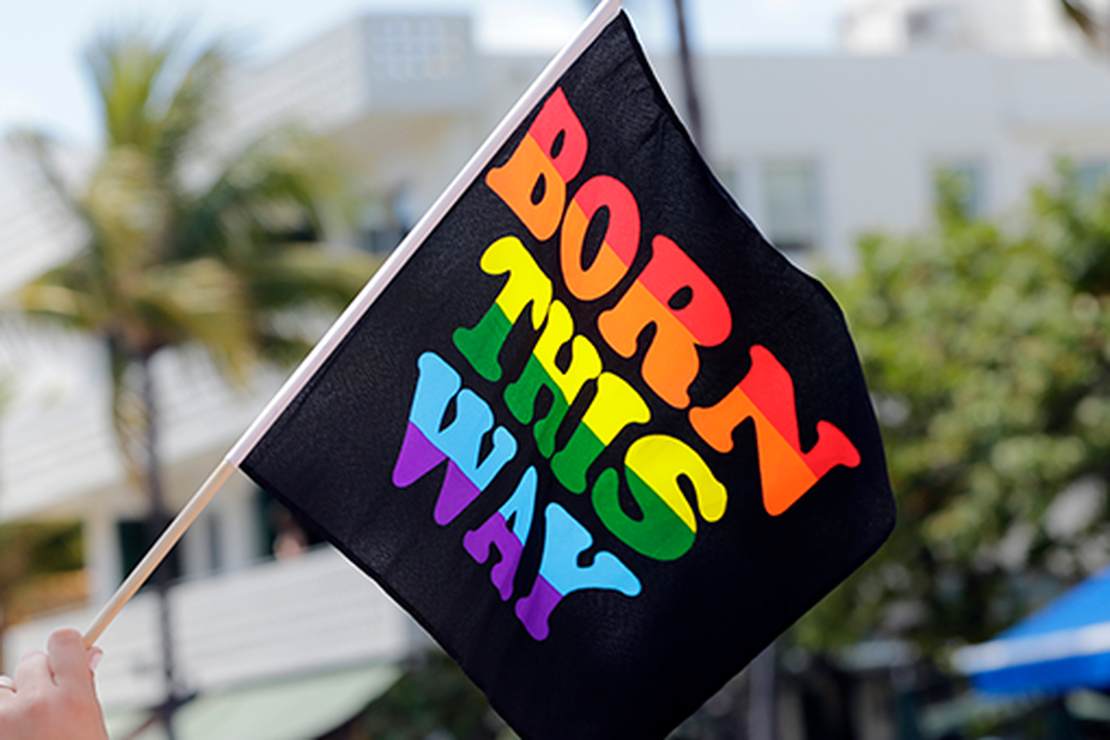
At CSPI (the Center for the Study of Partisanship and Ideology), Eric Kaufmann has a very lengthy study on a subject that had already been on my mind recently and the center of several conversations I’ve found myself in. A couple of friends of ours (who happen to be a straight couple) recently lowered their voices a bit and asked something along the lines of, ‘is it just me, or does it seem like there are a lot more gay people than there used to be?’ To be clear, they are some of the most open and tolerant people you’d ever care to meet and are very supportive of the gay singles and couples in our community. But the question still got me thinking. Because of my job, I spend far too much time online, browsing the news and writings about topics of interest. And yes, for the past several years it does seem that we’re hearing a lot more about LGBTQ issues and news items than in decades past. But does that mean there are really a lot more gay people than there used to be or are people just more open about it?
I took the question to our neighbors (a gay couple) and hoping not to cause any sort of stir, I just relayed the question the other couple had asked. One of them shrugged, while the other one thought for a few moments and said, “no. Not really.” I will also point out that these are two of the nicest, most generous guys in the world and they have been great friends and a tremendous help to me and my wife in the decade since they moved in.
Kaufmann’s study hits on this question with plenty of supporting studies to back up the figures. If you find the question intriguing, I suggest making some time to read the whole thing. But there are a few highlights I wanted to hit on today. First, here’s part of his intro.
The battle over Florida’s Parental Rights in Education Bill, dubbed the ‘Don’t Say Gay’ bill by progressives, is emblematic of this new culture war.2 Likewise, a claimed 1,000% rise in transgender identity since 2010 has been hotly debated.3 Is this a result of socialization and imitation, or does it spring from the lifting of social barriers? This report finds evidence for both the first and third propositions above. However, it posits a vital distinction between LGBT identity and behavior. The youthful surge is mainly about LGBT identity, with considerably less change in sexual behavior. The rise is greatest for bisexuality, especially among females, with less change for gays and lesbians. The growth in LGBT identification shows no signs of slowing down among the young, but there is compelling evidence that gender nonconformity peaked around 2020 and declined in 2021. It appears less prevalent among teenagers than those in their early twenties.
In addition, there is an important political dimension to the rise. This report finds that much of the LGBT rise has occurred among very liberal or far left-wing young people. Is this because such people are more liberated, or because LGBT is now a kind of political identity? The evidence reviewed here indicates that an explicitly political motivation may be at work among whites and the university-educated, but this is less likely to account for the rise in LGBT identity among young minorities and those without a college education.
Here are some of the numbers that have been showing up in the media and some detailed studies testing those figures. For starters, the study reports multiple surveys showing “a precipitous rise in the share of Americans identifying as LGBT, particularly among the youngest adults.” Some have put the figure as high as 20%, far above estimates from the years prior to 2010. But those figures represent those personally “identifying as LGBTQ.” Separate studies of people reporting one or more sexual encounters in the past five years showed that 96% reported exclusively heterosexual encounters in the 1990s. That number fell to 92% reporting exclusively heterosexual encounters in 2021.
So yes, the percentage reporting at least one homosexual encounter rose, but nowhere near as far as the “LGBTQ” reporting suggests. Also to be considered is the possibility that there is some reporting bias embedded in there. Acceptance of gay and lesbian relationships is far, far higher today. More people may have been reluctant to answer truthfully thirty years ago.
Much of it comes down to descriptions and, again, “identifying.” Among those under 30, particularly among liberal-leaning respondents, a majority of them who “identify” as LGBTQ had not actually engaged in anything other than heterosexual activity. The numbers skewed far lower among self-identified conservatives.
READ RELATED: Massive Macho Turkey Terrorizes Cyclists and Strollers in D.C.
Reading between the lines a bit, I will venture to guess that the high “surge” in numbers is driven largely by the addition of “T” to the “LGBT” formula. The number of men and women who identify as gay or lesbian respectively does not appear to have shifted all that much. And even a casual study of history will reveal that there have been gay and lesbian people in human society across the world for all of recorded history, with societal acceptance of such orientatons varying wildly, but probably not the actual numbers of gay and lesbian people.
The addition of transgenderism to the formula appears to be the game-changer, particularly when you include the categories of “nonbinary, non-gender conforming,” and similar tags. Up until quite recently, actual cases of gender dysphoria diagnosed by clinical psychiatrists were exceedingly rare. Much as with homosexuality, it’s easy to conceive that those numbers haven’t changed all that much either. But you don’t have to actually change your sexual preferences to simply declare that you are nonbinary or whatever, or even if you decide to announce that you now “identify” as the other gender or none at all.
This has become increasingly popular in an era where nearly everyone – particularly the under-35 generation – is constantly connected online watching for trends. This is what Ross Douthat described in a New York Times article earlier this year as potentially being “a form of social contagion, incubated online and by educational and medical institutions.” Everyone and their brother/sister, particularly on the left, is falling over themselves to rush to defend those who identify as transgender. There’s an instant support system and aura of approval and praise for anyone making such a declaration. Is it so hard to believe that this looks attractive to many young people who feel otherwise isolated?
Liberal politicians know how big this is to their base and they convert such ideas into policies whenever possible to score points. The latest example comes to us from Governor Kathy Hochul in New York. She’s working to ensure that anyone who wishes to can simply label their gender as “X” in her state. No doubt there will be armies rushing to take her up on the offer.
“X” gender designation will soon be available for New York residents https://t.co/pIKCIw9EBY pic.twitter.com/5LVevtRMLp
— The Hill (@thehill) May 31, 2022
All of this is just food for thought. As I said, go and read the report when you have time and see how it resonates with you. As far as I’m concerned, if social media had never been invented, the world would look largely unchanged today in terms of this topic. Of course, you could say that same thing about nearly any other facet of life. The advent of online resources and social media platforms has absolutely destroyed as much as it has created as far as I’m concerned.
Source:






